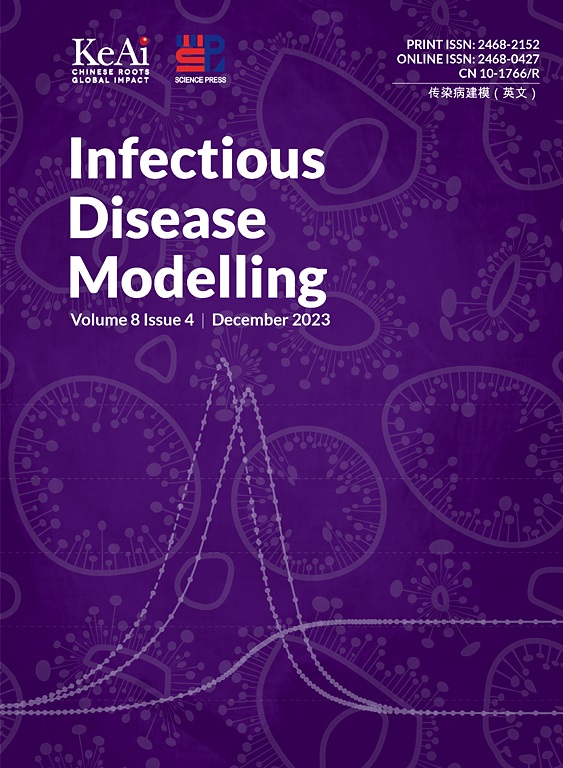模拟和研究传染病中的记忆免疫反应。应用于甲型流感病毒和 sars-cov-2 再感染
IF 8.8
3区 医学
Q1 Medicine
引用次数: 0
摘要
鉴于甲型流感病毒(IAV)和严重急性呼吸系统综合症冠状病毒 2(SARS-CoV-2)感染和再感染目前已在社区流行,了解针对它们的效应和记忆免疫反应极为重要。本研究的目的是调查记忆细胞和抗体在针对 IAV 和 SARS-CoV-2 再感染的免疫反应中的作用。为此,我们调整了以前发表的针对 SARS-CoV-2 感染的初级免疫反应的宿主内数学模型(Sadria & Layton, 2021),将两种记忆性免疫细胞(即记忆性 CD8+ T 细胞和记忆性 B 细胞)包括在内,并用两种病毒的特定值对新模型进行参数化。我们首先通过确定无病毒稳定状态和研究确保这些状态稳定的条件来研究模型的长期动力学。然后,我们通过模拟不同的病毒再感染时间(与病原体首次接触后 20 天、60 天和 400 天)来研究这种宿主内模型的瞬时动态。这样,我们就能根据再感染的时间来确定哪些记忆免疫成分对病毒的清除影响最大。我们的研究结果表明,与 SARS-CoV-2 感染相比,记忆性免疫反应对 IAV 感染的影响更大。此外,我们还观察到,当再次感染发生的时间较短时,二次感染后的免疫反应更为有效。本文章由计算机程序翻译,如有差异,请以英文原文为准。
Modelling and investigating memory immune responses in infectious disease. Application to influenza a virus and sars-cov-2 reinfections
Understanding effector and memory immune responses against influenza A virus (IAV) and severe acute respiratory syndrome coronavirus 2 (SARS-CoV-2) infections and re-infections is extremely important, given that they are now endemic in the community. The goal of this study is to investigate the role of memory cells and antibodies in the immune responses against IAV and SARS-CoV-2 re-infections. To this end, we adapt a previously-published within-host mathematical model (Sadria & Layton, 2021) for the primary immune response against SARS-CoV-2 infections, by including two types of memory immune cells, i.e., memory CD8+ T-cells and memory B-cells, and by parametrising the new model with values specific to the two viruses. We first investigate the long-term dynamics of the model by identifying the virus-free steady states and studying the conditions that ensure the stability of these states. Then, we investigate the transient dynamics of this in-host model by simulating different viral reinfection times: 20 days, 60 days and 400 days after the first encounter with the pathogen. This allows us to highlight which memory immune components have the greatest impact on the viral elimination depending on the time of reinfection. Our results suggest that memory immune responses have a greater impact in the case of IAV infections compared to SARS-CoV-2 infections. Moreover, we observe that the immune response after a secondary infection is more efficient when the reinfection occurs at a shorter time.
求助全文
通过发布文献求助,成功后即可免费获取论文全文。
去求助
来源期刊

Infectious Disease Modelling
Mathematics-Applied Mathematics
CiteScore
17.00
自引率
3.40%
发文量
73
审稿时长
17 weeks
期刊介绍:
Infectious Disease Modelling is an open access journal that undergoes peer-review. Its main objective is to facilitate research that combines mathematical modelling, retrieval and analysis of infection disease data, and public health decision support. The journal actively encourages original research that improves this interface, as well as review articles that highlight innovative methodologies relevant to data collection, informatics, and policy making in the field of public health.
 求助内容:
求助内容: 应助结果提醒方式:
应助结果提醒方式:


